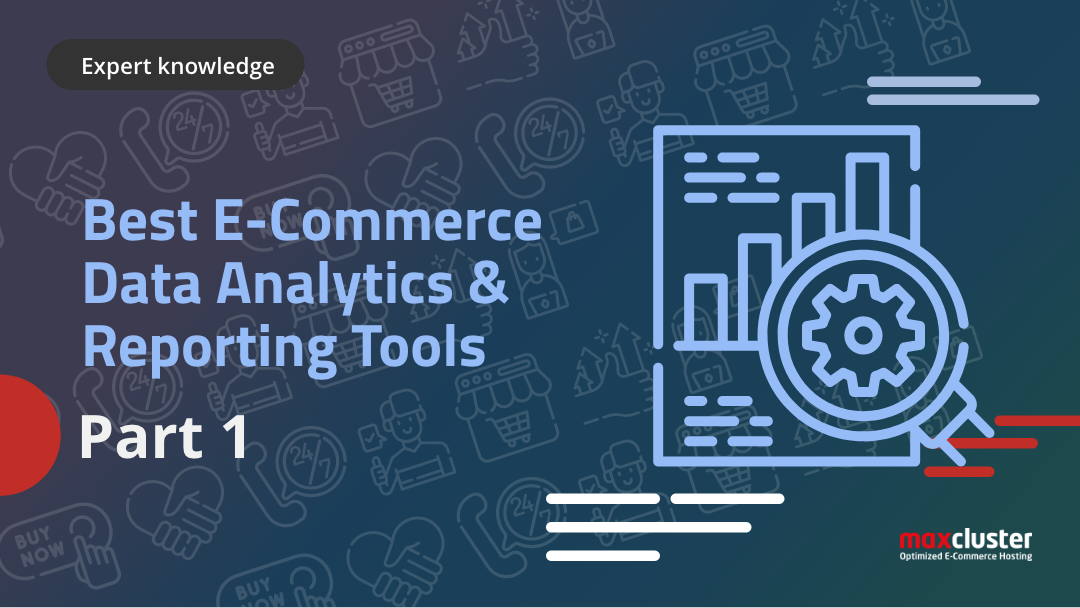
In the continuously evolving landscape of e-commerce, it is essential for companies to stay updated when it comes to analytics and reporting tools. The competition is intense, and companies must utilize data to make informed decisions and remain competitive. Therefore, we take a closer look at the top analysis and reporting tools for e-commerce in 2024, which are worth considering.
E-commerce Data Analytics & Reporting
What are Analytics and Reporting Tools?
In the world of digital e-commerce, data is more valuable than ever - it's the new gold. Analytics and reporting tools are at the heart of this digital treasure hunt and are indispensable for businesses.
Analytics tools focus on examining data, identifying patterns, recognizing trends, and gaining insights. They utilize algorithms and statistical models to understand complex data sets and answer questions.
Reporting tools focus on transforming existing data into understandable reports or dashboards. They provide a clear overview of metrics, key performance indicators, and performance indicators to offer insights to decision-makers quickly.
In short: Analytics and reporting tools enable companies to understand complex data and gain important insights. Most tools combine analytics and reporting functions. Therefore, it is essential to delve into this topic to fully grasp the significance and benefits of these tools. But why are these tools so important, what are they used for, and why is it essential to delve into this topic?
Why Analytics and Reporting Tools are Essential for Your Online Shop
The world of e-commerce is highly competitive and dynamic. Companies that do not engage with analytics and reporting tools risk falling behind and being overtaken by the competition. Data is the key to understanding the market, customer needs, and the competitive landscape. Companies that ignore data are foregoing valuable insights that could inform their business decisions and drive their growth.
1. Understanding Customer Behavior
Analytics tools enable understanding customer behavior at a profound level. From the pages customers visit to the products they view, these tools provide insights that traditional sales analytics cannot deliver. By understanding customer behavior, you can develop personalized marketing strategies that increase engagement and conversion rates.
2. Optimizing Business Strategies
You have the opportunity to continuously monitor and optimize your business's performance. By analyzing key metrics such as revenue, conversion rates, customer retention, and costs, you can identify areas that need improvement and develop strategies to achieve your goals.
3. Competitive Advantage
In today's economy, competitiveness is crucial. Companies that effectively use analytics and reporting tools have a clear competitive advantage over those that do not. By continuously monitoring the market, analyzing competitor data, and identifying trends, you can better position yourself and seize opportunities for growth and innovation.
4. Identifying Trends and Opportunities
Analytics tools enable early detection of trends in their industries and markets. By analyzing data, you can identify potential opportunities, explore new markets, and develop innovative products or services to meet changing consumer needs.
5. Optimizing User Experience
UX is the buzzword! User experience is a crucial factor in the success of your online shop. You can uncover weaknesses in website or app usability. Analyzing click paths, bounce rates, and interaction data can help continuously improve the user experience and ensure that your customers have a seamless and enjoyable experience.

Types of Tools
There are a variety of ways to collect and analyze customer data. Before we discuss specific dashboards and tools in part 2 of our blog series, here's a brief introduction to the world of various types of tools and dashboards.
Allrounder Data Analytics and Reporting Tools
All-in-one Data Analytics and Reporting Tools offer a wide range of features and can cover various aspects of e-commerce business, including sales analytics, customer behavior, marketing campaigns, and more. They provide a holistic view of the entire e-commerce ecosystem and help effectively utilize business data.
CRM Analytics Tools
CRM Analytics Tools focus on analyzing customer relationships and interactions. They help companies create customer profiles, track customer lifecycles, identify sales opportunities, and create personalized marketing campaigns to improve customer loyalty and increase sales.
Product Analytics
Product Analytics and Reporting Tools focus on analyzing user behavior within digital products and services. They provide insights into product performance, usage frequency, features, user acceptance, and other aspects to optimize product development and improve the user experience.
Privacy First Tools
Privacy First Tools place particular emphasis on data privacy and privacy policies. They allow companies to collect and analyze data anonymously and in compliance with privacy regulations to protect user privacy while gaining valuable insights.
Special Breed B2B
Special Breed B2B Tools are specifically tailored to the needs of Business-to-Business (B2B) companies. They offer features such as lead tracking, account management, conversion optimization, and other B2B-specific analytics to support the growth and success of B2B companies.
AI-powered Customer Analytics Platforms
These platforms use artificial intelligence to analyze customer behavior, make predictions, and provide personalized recommendations. With advanced algorithms, companies can optimize their marketing strategies and increase customer satisfaction.
Predictive Analytics Tools
Predictive Analytics Tools enable predicting future trends and identifying potential bottlenecks or opportunities early on. By analyzing data from various sources, companies can make informed decisions and optimize their inventory management and marketing strategies.
Conversion Rate Optimization (CRO) Tools
Conversion Rate Optimization (CRO) Tools are crucial for e-commerce companies. CRO tools help analyze the entire sales process, identify weaknesses, and suggest improvements to increase conversion rates and maximize revenue.
User Experience Analytics Platforms
User Experience Analytics Platforms focus on analyzing and optimizing the user experience on a website or application. The customer journey is complex and can span across various online channels. These tools provide insights into user behavior, navigation, usability, and other aspects to improve customer satisfaction and loyalty.
SEO Tools
SEO Tools support website search engine optimization (SEO). They offer features and analytics that help improve a company's online presence and increase visibility in search engine organic results like Google. Typical features of SEO tools include keyword research, monitoring ranking history, backlink analytics, on-page optimization suggestions, competitive analytics, identifying technical issues, and tracking SEO metrics.
Our Conclusion
With the variety of analytics and reporting tools available, it's easy to lose track. It's important to emphasize that selecting the right tools depends on the individual needs and goals of your company. So, you won't need all of them. By investing in powerful tools and applications, you can take your e-commerce business to the next level and gain a competitive advantage. With the right tools in 2024, the possibilities are endless.
Next week in part 2 of our blog series "E-commerce Data Analytics & Reporting," you'll get a detailed overview of some exciting analytics and reporting tools. Don't miss any more blog articles by subscribing to our newsletter and staying up-to-date!




